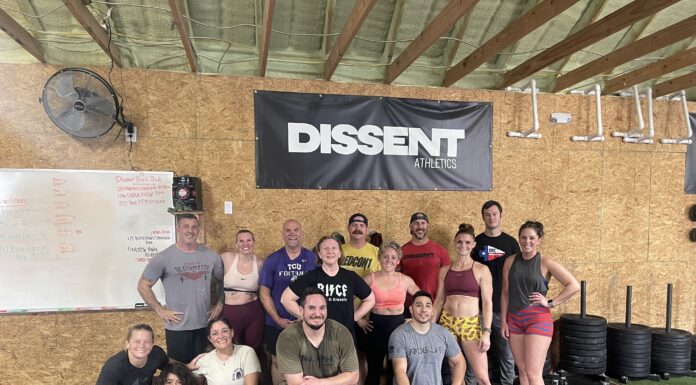?The following article is part of an extensive article that recognizes contributes that have been or currently be made to the USA?s space exploration program by businesses that produces advanced composite materials. One of those sits on the outskirts of Kennedale.?{{more:? continue …}}?
Photo: Solar probe. Parker Solar Probe?s carbon fiber composite foam TPS is designed to withstand the heat of
the sun’s corona. Source | NASA
C-Cat Carbon Advanced Technologies, INC located at 4704 Eden Road was founded in 1988 by Francis Schwind. Schwind was a former engineer during NASA?s Space Shuttle program.?
C-Cat was recognized for it part in NASA’s Parker Solar Probe which was was successfully launched in 2018.?C-Cat works with Carbon Carbon. Carbon-Carbon is a composite material known for its high temperature resistance. It can withstand temperature from 3,200 to 4,000 degrees Fahrerheit and it actually becomes stronger has it gets hotter.??While the article identifies C-CAT as from Kennedale, it is located just outside of the city limits of Kennedale on Eden Road on the Arlington side of the line. It does fall within the Kennedale ISD boundaries. The following is just part of a larger article.? Link to the full article follows this report.?Composites in the race to space???SCOTT FRANCIS Contributing Editor, CompositesWorld?Advanced materials use in current and upcoming NASA missions.?July 20, 2019 marked the 50-year anniversary of the first Apollo moon landing. Though, at the time the Apollo capsule was built, the composites industry was still in its infancy and the materials were not yet in widespread use, the Apollo capsule used early composite technology in the form of an ablative heat shield made from Avcoat, an epoxy novolac resin with silica fibers in a fiberglass-phenolic honeycomb matrix. A fiberglass honeycomb was bonded to the primary structure and the paste-like material was injected into each cell individually.?Since Apollo, advanced composites have evolved by leaps and bounds, and have played a significant role in space programs with use in launch vehicles, the space shuttle, satellites, space telescopes and the International Space Station.?Today, the human race finds itself poised for some exciting new steps into space exploration. The current administration has called for a return to the moon by U.S. astronauts by 2024 and has announced a 2021 budget of more than $25 billion for the National Aeronautics and Space Administration?s (NASA, Washington, D.C., U.S.) human space exploration program. NASA administrator Jim Bridenstine says the budget is ?one of the strongest budgets in NASA history.?
?In addition to another moon shot, NASA has current and forthcoming missions to study our solar system from the sun to the icy moons of the outermost planets and beyond. Missions to explore the sun are currently underway: at the time of this writing, the Parker Solar Probe is currently monitoring the sun?s atmosphere and a Solar Orbiter has successfully launched.?Efforts are also underway to further the exploration of exoplanets and distant galaxies through the Transiting Exoplanet Survey Satellite (TESS) mission and the James Webb Space Telescope, the latter of which has made strides toward launch-readiness over the past year.?New spacecraft and programs have also resulted in recent years from increased collaboration between national and international space agencies as well as commercial companies. For example, SpaceX (Hawthorne, Calif., U.S.), with its Crew Dragon spacecraft, and Boeing Space and Launch (Arlington, Va., U.S.), with its Starliner spacecraft, are racing toward the first crewed U.S. spaceflight since the discontinuation of the space shuttle program in July 2011. The two companies have been performing test flights with NASA in hopes of a crewed mission in 2021.?From the increased support of NASA?s space program to the explosive growth of commercial space, the human race seems truly poised for the next great space age. Composites and advanced materials play an increasingly larger role in the manufacture of the launchers, spacecraft and instruments that make all of this exploration possible.?Sun?Two missions are currently underway to improve our understanding of the sun and its behaviors, both with the ultimate goal of forecasting solar storms that can affect terrestrial electrical systems, satellite communications and GPS.?Parker Solar Probe
?The Parker Solar Probe launched in August 2018 and performs in-situ measurements and imaging to study the corona of the sun and solar wind. In order to endure the extreme temperatures in this region, the probe uses a 4.5-inch-thick lightweight reflective shield. This thermal protection system (TPS) is made from carbon fiber composite foam sandwiched between two carbon laminates and coated with white ceramic paint on the sun-facing surface. The shield was designed by Johns Hopkins Applied Physics Laboratory (Laurel, Md., U.S.) and built at Carbon-Carbon Advanced Technologies (Kennedale, Texas, U.S.).?Most of the probe?s instruments are tucked behind the TPS, and sensors along the edge of the heat shield keep the spacecraft positioned correctly. Solar arrays that are used to power the craft can be retracted into the heat shield?s shadow for protection. A simple cooling system that operates by circulating about a gallon of water is also employed to keep the solar arrays and instrumentation cool.?In January 2019, NASA reported that Parker Solar Probe was operating as designed following its fourth close approach to the sun, known as a perihelion. The craft?s TPS reached a new record temperature of 1,134? F (612? C), though the spacecraft and instruments behind this protective heat shield remained at a temperature of about 85? F (30? C). During the spacecraft?s closest three perihelia in 2024-25, the TPS will see temperatures around 2,500? F (1,370? C).?Read the full article at?Composite World Blog







































